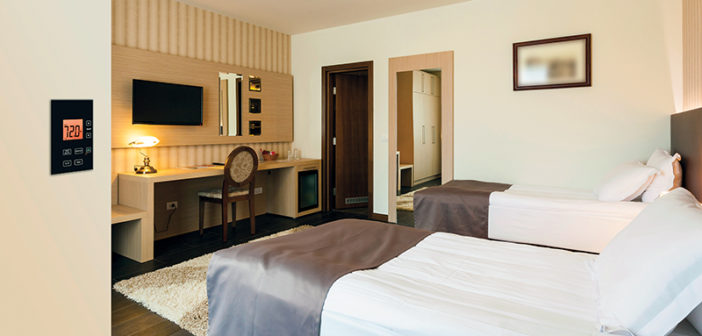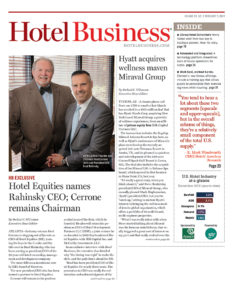KAANAPALI, HI—Reducing energy costs is always top of mind for hoteliers, so it’s no surprise that researching environment-friendly alternatives has been a top initiative for many brands in the industry. It seems as though every day, a new green campaign is being promoted to guests or pushed out to trade magazines for publication. More LEED-certified hotels are being developed as a result of industry leaders being conscious of energy consumption, and some hospitality groups are even encouraging a sustainable culture from within. Energy-saving measures are especially of the utmost importance to those properties situated in states where energy costs are some of the highest in the nation.
Take Hawaii, for instance, where electricity is the most expensive in the nation. The average cost of electricity in 2016 was $0.24 per kilowatt-hour (kWh). By comparison, the average in the United States during the same year was $0.10 per kWh across all sectors. To overcome the costly burden of operating in a state where local resources for energy are extremely limited, The Whaler at Kaanapali Beach Resort sought ways that it could save money on its electric bill. Reviewing its options, the property heeded the advice of Shawn Racoma, chief engineer-AOAO for the 360-room property, who had worked in several other properties on Maui previously.
The property tasked him with figuring out how to monitor and regulate how the rooms use air conditioning and, therefore, aid energy savings. From experience, the only option that made sense to Racoma at the time was Honeywell’s Inncom Inncontrol 3 real-time Hotel Energy Management System, a solution that is designed to control energy usage in rooms, in addition to gathering and managing data from devices and sensors throughout the entire property.
Racoma and his team did review other thermostats available in the marketplace, particularly the solution he believed to be the next best product in line following Honeywell’s thermostat, but ultimately he found that the technology was “nowhere near Inncom’s expandable system.”
Explaining the decision, Racoma said, “Inncom’s open-ended technology proved to be head and shoulders above other thermostats; plus, we had proven results based on the other properties I had installed them in. There were several functions that impressed us: a motion-detecting system that made allowances for non-movement in the unit, humidity control, random unit energy testing, set back and deep set back settings. These are just a few of the operational features that bring value to Inncom thermostats.”
The decision to go with Honeywell resulted in a positive outcome for a property looking to save money on energy costs. Within the first eight months of use, the property recognized a 30.4% energy cost savings. The Whaler at Kaanapali Beach Resort witnessed an estimated savings within its first year of $325,405 (based on an energy reduction of 611,047 kWh). According to the property’s chief engineer, the hotel is averaging a 20-30% savings in overall energy costs.
When the property installed Honeywell’s product in 2014, it implemented Inncom E528 thermostats; humidity detection and abatement, PIR motion sensors; door sensors on entryways and patios; and B574 edge routers.
The time it takes for a property to set up Honeywell’s product comes down to the availability of rooms. “For a new-construction, rooms are usually released by floor, so it is dependent on the construction schedule,” said Tom Woodruff, GM at Honeywell Hospitality. “It’s similar to a retrofit where floors are taken out of service to do the work.” Honeywell can install Inncom at a 300-room property in about six to eight weeks, which is a rough estimate, according to Woodruff. “The costs vary depending on the solution, so it is not easy to give an exact figure,” he noted.
Worldwide, Honeywell has about 7,500 networked systems installed. According to Woodruff, a networked system, as opposed to a stand-alone system, provides additional energy savings. By integrating with the PMS at the location, hotels can save an additional 10 to 15% of the guestroom energy usage. Properties also gain the ability in real-time to see the performance of rooms, as well as any issues. Other areas of the hotel’s operations are also able to use data gathered by the system.
“For instance, the housekeeping staff can run reports from Honeywell’s Inncom Inncontrol 3 system in the morning to give staff members the rooms to clean first that are already unoccupied,” he said. “This helps them to be more efficient than walking up and down the hall knocking on doors.”
Another area where hotel operations can use information acquired by the solution is security. For instance, the length of time a guestroom door has been ajar. “During the day, a door being ajar for 30 minutes might not be concerning as there might be maintenance going on in the room,” Woodruff explained. “At 3 a.m., a door being ajar for 30 minutes is a likely cause for concern, and someone should go to the room to see what’s happening.”
The Whaler on Kaanapali Beach uses the system in a similar way for its loss prevention department. “Because the Inncom thermostat utilizes motion sensors and door switches (matched with door lock interrogation) we were able to determine exactly when and who entered the room, where they moved through the room and when they left,” Racoma explained.
“Honeywell focuses on hospitality with a sales force that is solely focused on selling the Inncom solution,” Woodruff said. “Other businesses in Honeywell may sell to a hotel directly, or through a partner, for other systems like fire and life safety, building management systems for the common area, or security. Ninety-nine percent of Inncom’s business today is with hospitality customers. We are the experts in the market because we focus on it every day.”
In the upcoming year, Honeywell will be releasing a new thermostat in an attempt to bring an updated aesthetic, improved guest interface, and simplified service and maintenance. “We will also begin work on an update to our Inncontrol system that will add features like mobile access to the information for the hotel staff and cloud-based hosting capabilities,” Woodruff said. HB


